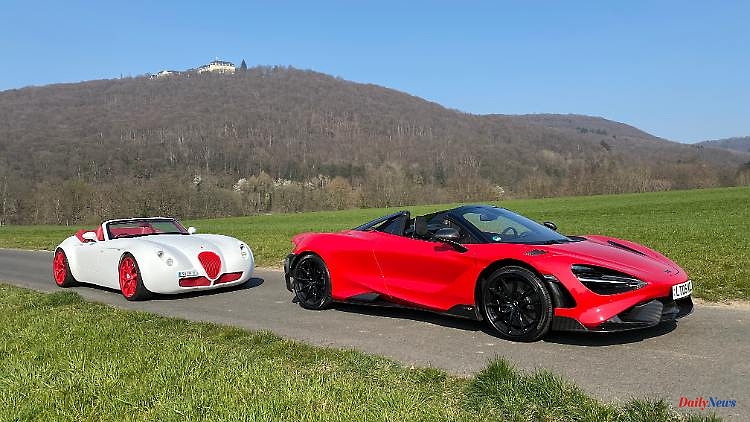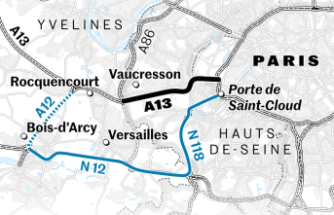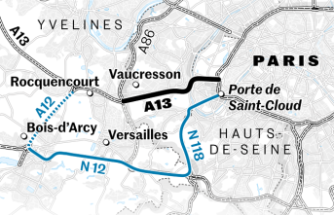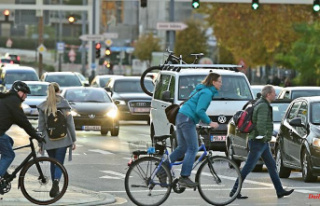What unites a McLaren 765 LT Spider and a Wiesmann MF5 Roadster is their rarity, their sportiness and the fact that both are more or less handcrafted. In this respect, this is a rare meeting of two manufacturing giants.
A McLaren 765 LT Spider not only guarantees maximum track performance, no, the airy temperament bolt is also limited to exactly 765 copies and is therefore quite an exclusive pleasure. The much more exotic counterpart to this McLaren almost inevitably has to come from Dülmen. Just 43 copies of the also extremely high-performance and open ten-cylinder suction engine called MF5 Roadster from Wiesmann were made.
Ironically, the Wiesmann MF5 Roadster, an original German automotive growth, is rolling here today as a right-hand drive. In contrast, the selected McLaren 765 LT Spider, even equipped with a British license plate, is left-hand drive. Well, the explanation is simple: as the official test vehicle, the 765 naturally comes from the McLaren manufacturer's fleet, which is used for all of continental Europe, and the traditional brand is based in south-west England after all.
This comparison is, so to speak, a German-English derby that ends in a draw. On the one hand there is the track professional with inexhaustible power reserves (765 horses are an announcement) in both the longitudinal and lateral disciplines. A tight athlete with a double-turbocharged, flat-plane eight-cylinder engine optimized to shave every last tenth of a second. The McLaren gives everything to keep the balance between exclusivity on the one hand and the solidity of the large series on the other.
The comparison candidate, Wiesmann MF5, is not at all geared towards maximum perfection, which makes it charming. Here, countless engineers have not filed ages on the profile of the last air baffle. Here not every bead is jazzed up as an aerodynamic problem. The Wiesmann is about exclusivity, especially, but in the sense of individualism. You can still have a lot of fun with the MF5, as former DTM professional Christian Menzel already confirmed.
For his part, he had the Wiesmann top model with the 555 hp eight-cylinder in his hands and shooed it around the corners in Mendig, near the airfield - with a permanent grin on his face. However, he pointed out that driving the MF5 at the limit is particularly demanding. With its lightweight rear axle, the MF5 is no traction monster. And the heavy ten-cylinder on the front axle should not necessarily make it easier for the pilot. Then just without a stopwatch on the dashboard - so the melodious ten-cylinder with 507 hp makes a lot of fun even for car fans with less racing experience.
If the 325 rollers on the rear axle are warm, you would have to let the five-liter with ten individual throttle valves rotate quite a bit to generate slip. So grip isn't exactly in short supply. Wiesmann implemented the entire drive train in the 4.22 meter long roadster - including the automated seven-speed gearbox. Always keep the train on the move, then switching pauses are not an issue. The MF5 pushes brute, reaches country road speed in the four-second corridor. And the passenger not only experiences tight pressure in the lower back, but also a good breeze in the face if the fabric hood has been stowed inside the car beforehand.
And if the test drive is only short, a few corners are a must. In this case, it is the hairpin bends to the old Petersberg guest house - located south of Bonn in Königswinter - that the Wiesmann has to storm up. And he does it with a bang, can be thrown into the hairpin bend and shines with easy to dose, gripping brakes. The propellant unit, borrowed from the BMW M5, weighs around 1.4 tons and doesn't have to carry much thanks to consistent lightweight construction technology with the generous use of aluminum and GRP. No wonder he's so quick.
When driving in a civilized manner on this side of the track, an inexperienced Wiesmann driver struggles more with a lack of clarity than with the pitfalls of the chassis. And this is made even more difficult by the fact that it is a right-hand drive. But after a few kilometers you get used to it and can take a relaxed look at the many round instruments. In addition to the classics such as engine speed and speed, they provide information about oil pressure and temperature plus water temperature and tank level. Characteristic metal switches sit like a glove in the middle of the bright red leather dashboard, and the "Sport" button in particular should interest the dynamically oriented driver, because the full 507 hp are only released when it is pressed. After the short ride, you park carefully on the side of the road. Take a deep breath and take another look at the red Alcantara and leather with the pretty decorative stitching. The penetrating red shines through, maybe a bit too much - but somehow also cool.
Transfer to the British. Here the passenger does not expect any instrument aesthetics, instead rather racing game flair in the midst of a sea of Alcantara and carbon trim. A mixture of a lot of display and buttons for various chassis settings should appeal to younger to middle-aged customers. It remains to be seen how many of the 1,530 customers (Coupé and Spider taken together) actually let the 765 fly on the course. But the top model of the Supercars series, as McLaren classifies the series, is a crowd puller like any extroverted sports car. It can be done, but a large audience distracts from the action, so it's not a good idea if you want to be on the move quickly. Then rather off to the lonely country road to have free rein for dynamic insoles. Fun fact: McLaren issued the 765 LT test car with winter tires. The Brits well knew that things wouldn't get quite so wild in the context of this comparison.
But it's enough for lots of fun on the country road. However, it is first necessary to work your way into the carbon body, because the full bucket seats fitted here, due to the side bolsters, only allow the two passengers access if they are physically active. OK. If you then sit behind the wheel, the light carbon chairs seem quite comfortable. Just like the damping, by the way. When the 765 isn't cruising in its wildest modes, it's a comfortable one to travel in. But please don't forget to press the right steering column lever before larger bumps in asphalt or speed bumps, so that the lift system can raise the vehicle level in a flash. Then the aprons and underbody remain intact even when driving over the nastiest bumps in the road.
The roof clearance is just as easy to open as it is easy to open: at the touch of a button, one of the fastest convertibles is suddenly there. Driving with the spring sun still soft on your neck is not only good for your vitamin D balance, but also for your ears. Because that way you can enjoy the overpowering eight-cylinder acoustically even better.
The performance anyway, because the Brit makes it easy for his driver. It follows the steering angle with extreme precision, and even with the winter tires it can only be persuaded to leave visible tire wear on the road - regardless of whether it's ambitious longitudinal or lateral acceleration. The athlete, who also weighs 1.4 tons, shakes a hundred in 2.8 seconds, for 200 km/h it only takes a single long breath. Co-drivers should have good nerves in case the driver lets it rip. The neck muscles have to work hard.
McLaren 765 LT Spider or Wiesmann MF5 Roadster, the final question must be. The answer is simple: definitely both! The white ten-cylinder beast from Dülmen with the striking red rims and the red radiator grille is the lightning-fast individualist among individualists, while the Brit represents the standard work among top performers, so to speak. In the meantime, to buy both offers, you probably have to use the relevant car exchanges, because the Wiesmann has long been history, and there were so many inquiries for the 765 that production is sold out. cost point? An MF5 with the rare ten-cylinder changes hands for just under 300,000 euros, while 765 Spider contracts, some of which can still be freely configured, are traded for more than 500,000 euros. No wonder that both copies are considered dream cars.
6












